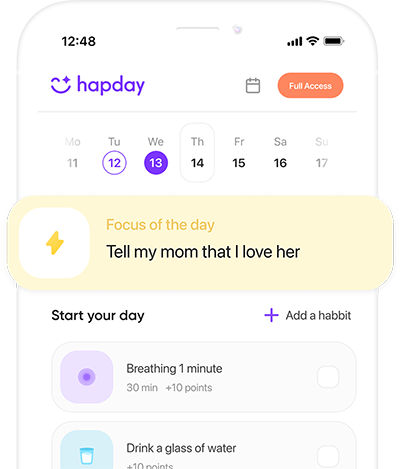Okay, so… let’s talk happiness. Don’t you feel like in today’s super-fast, almost frantic world, finding that elusive joy in everyday life is quite a task? It feels like trying to catch snowflakes—all unique and fleeting. Yet, by embracing certain happiness practices, you can actually boost that sense of well-being and emotional health we all crave. Happiness, it turns out, isn’t just something that happens to you; it’s something you can nurture—an ongoing journey that demands conscious effort. Especially for Gen Z and Millennial women, adding these practices into daily routines can be utterly transformative. We’re talking lives filled with genuine joy and fulfillment. Intrigued? Let’s dive in!
Table of Contents
- Understanding the Science of Happiness
- The Role of Mindfulness
- Gratitude as a Key Component
- Building Meaningful Connections
- Exercise and Physical Well-being
- Embracing Creativity
- Balancing Work and Leisure
- Conclusion
Understanding the Science of Happiness
Alright, before we leap into these practices, let’s pause and unravel the science behind this whole happiness thing. Research reveals that about 50% of our happiness is baked into our DNA—thanks, Mom and Dad—while 10% depends on our life circumstances. That leaves a whopping 40% shaped by… wait for it… our daily actions and mindset. This shows the sheer power we hold in crafting our own happiness—pretty empowering, right? (Lyubomirsky, Sheldon, & Schkade, 2005).
The Role of Mindfulness
Mindfulness. A buzzword? Sure. But more importantly, it’s a powerhouse tool for finding joy. It’s about being present and fully immersed in the now, sans judgment. Studies—yes, actual science—tell us mindfulness can slice through stress, boost mood, and increase overall life satisfaction (Keng, Smoski, & Robins, 2011).
How to Practice Mindfulness
- Start with Deep Breathing: Set aside a simple five minutes a day. Focus entirely on your breath—inhale deeply through your nose, pause for a beat or two, then exhale slowly through your mouth.
- Engage in Mindful Eating: Discover this—savor the taste, texture, and aroma of your food. Eating mindfully isn’t just about nourishment; it helps you appreciate your meals and fosters a better relationship with food.
- Incorporate Short Meditation Sessions: Use those apps—Headspace or Calm can guide you through quick meditation sessions that fit snugly into your busy schedule.
Gratitude as a Key Component
Regular gratitude practice is a game changer, steering your focus from scarcity to abundance. A study in the Journal of Personality and Social Psychology found folks who kept a gratitude journal felt more optimistic and physically well (Emmons & McCullough, 2003). Seeing the trend here??
How to Cultivate Gratitude
- Keep a Gratitude Journal: Every day, jot down three things you’re thankful for. Trust me, over time, this mindset shift can completely change your perception of happiness.
- Express Appreciation: Ever written a heartfelt note or just sent a quick text to show thanks? It’s a small gesture, yet it means the world.
Building Meaningful Connections
Social connections—they’re not just important, they’re crucial. Having a solid support system can defend against the blues and boost feelings of belonging and happiness (Holt-Lunstad, Smith, & Layton, 2010).
Ways to Strengthen Relationships
- Schedule Regular Check-Ins: Weekly chats with friends or family, whether face-to-face or virtually, spread that love around.
- Join Social Groups or Clubs: Meet new people while doing activities you enjoy—a double win! It’s a fantastic way to foster new friendships.
- Practice Active Listening: Show genuine curiosity during conversations, which deepens those connections we all yearn for.
Exercise and Physical Well-being
Ah, exercise—it’s good for more than just your waistline. Physical activity is like medicine for the mind, releasing endorphins that lift your mood naturally. The Mayo Clinic says it can help chase away symptoms of depression and anxiety, upping overall happiness (Mayo Clinic Staff, 2020).
How to Incorporate Exercise
- Find Activities You Enjoy: Yoga, dancing, hiking—choose whatever makes you feel alive and keeps you moving.
- Set Realistic Goals: Start small and build up to keep burnout at bay and motivation high.
Embracing Creativity
Getting creative—who knew it was tied to happiness? Expressing yourself creatively raises dopamine levels, that feel-good brain chemical, enhancing your mood (Schaffer et al., 2009).
Ways to Explore Creativity
- Take Up a New Hobby: Painting, writing, music? New hobbies can spark joy and keep your mind agile.
- Engage in Daily Creative Challenges: Dedicate even a brief window each day to creativity—doodling counts!
Balancing Work and Leisure
It’s a must to strike a balance between work and play. Chronic stress from overworking can drain happiness quicker than you think. Protect your downtime to recharge and keep your mental health in check.
Strategies for Work-Life Balance
- Set Boundaries: Define your work hours—no peeking at emails beyond these. You’ve got to protect your personal time!
- Prioritize Leisure Activities: Pencil in time for leisure—hobbies, relaxation, or social events that spark joy.
- Practice Time Management: Calendars or planners can help organize tasks, freeing up precious recreational time.
Conclusion
Peeling back the layers, you’ll see happiness practices like mindfulness, gratitude, connections, exercise, creativity, and striking that magical work-life balance all have their role to play in finding joy. By weaving them into your life with intention, you’ll enhance your well-being and embrace a fuller, more joyful existence. Remember, happiness isn’t a destination—it’s a journey. Start yours today! Why wait?? Try out Hapday to track your happiness progression and take those small steps daily to see big changes.
And hey, don’t forget to smile on the way to a happier you. After all, who doesn’t want to spark a bit of joy every single day?

